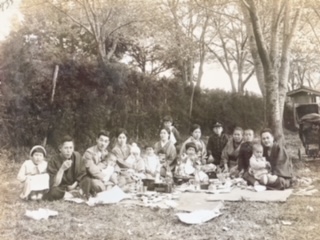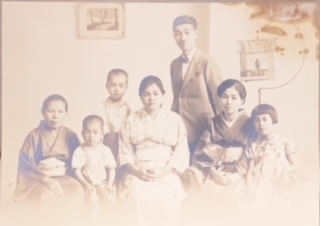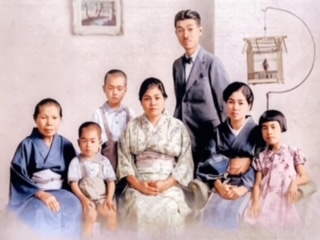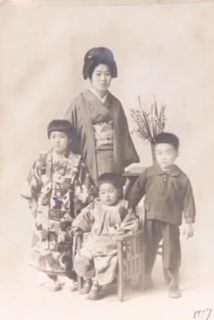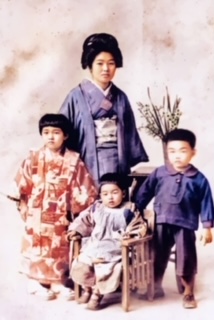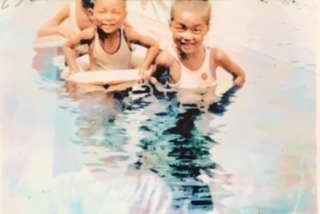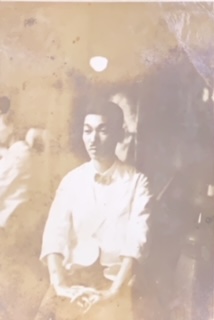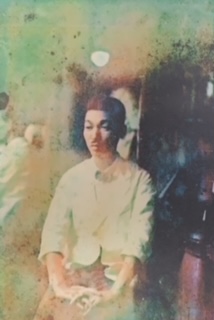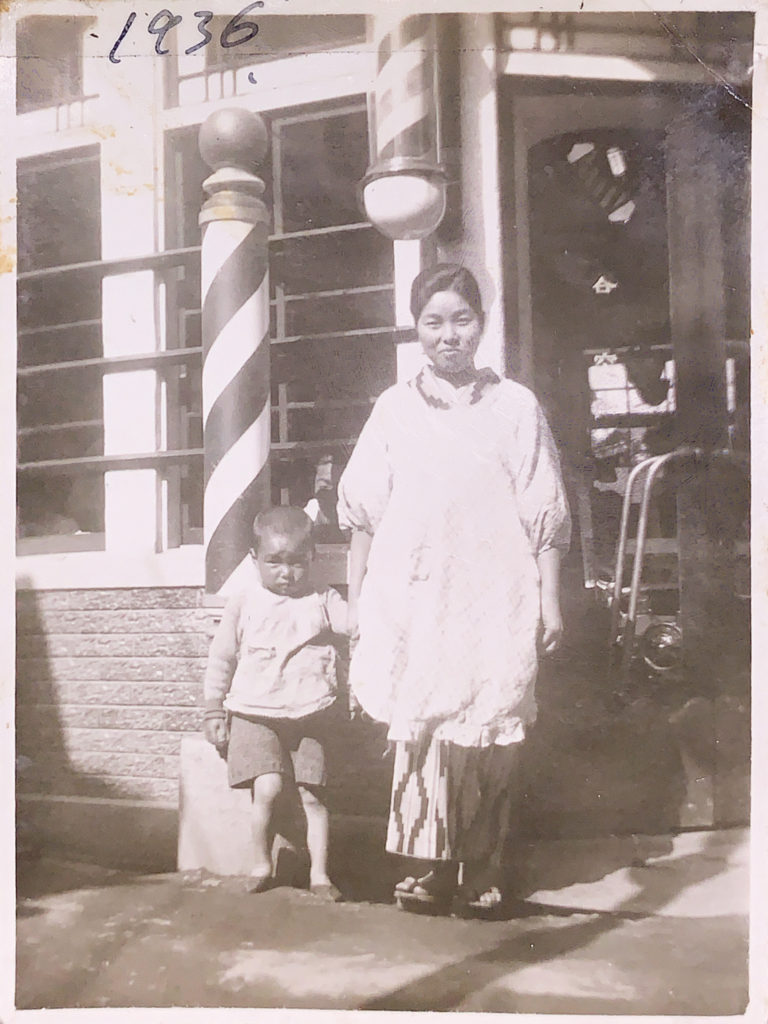Tokuso Hamai
Lost lives never come back
7. Encounter and “Rebooting Memories”
In 2016, In This Corner of the World, written by Fumiyo Kono, was adapted into a film by director, Sunao Katabuchi. Prior to this, in 2014, the director came to Kure, which is the main setting of the film, and also visited Hiroshima, to do research on the townscape of the city prior to the atomic bombing, in order to accurately recreate the houses and other structures from that time. Nakajima-honmachi was set as the town where the main character, Suzu, meets her future husband, Shusaku, so he was looking for documents showing the outer appearance of houses and stores from back then. He also came to my house to see my photos from that time, and since the photos were in black and white, I explained about the colors. I spent the whole day explaining the various pictures and talking about my family, but our house appeared in the film for only four seconds. He later made a model of our house. I was very pleased to see our old home, which had turned into rubble in an instant on August 6, 1945 and which I could only see in photographs, recreated as it was, while I still remembered it. The model is currently stored at the Hiroshima Peace Memorial Museum.
In 2015, I built a grave for the Hamai Family. When I told Director Katabuchi, “I still can’t believe that my parents have died, even though I built this grave,” he had tears in his eyes.
In 2017, I was being interviewed by a local TV station at Peace Memorial Park. At that time, members of “The 10,000 High School Students Signature Campaign” from Hiroshima Jogakuin High School were collecting signatures for the abolition of nuclear weapons. One of the first-year students there, Anju Niwata, approached me. She asked me to speak about my A-bomb experience at her high school. Miss Niwata was also a member of Jogakuin’s “Hiroshima Archive” executive committee. The “Hiroshima Archive” is a project launched in 2011 by Professor Hidenori Watanabe at the University of Tokyo. It is a “digital archive” of hibakusha testimonies, photographs, maps, etc., which have been digitized and made available on a digital globe that can be viewed from around the world. Jogakuin had many testimonies from A-bomb survivors that were previously recorded, and this was a project where Professor Watanabe’s technical skills and Jogakuin’s accumulated A-bomb testimonies matched well.
Later, I went to Jogakuin High School with my photo album and gave a talk. After hearing my story and seeing the photos, Miss Niwata later thought that she wanted to colorize the photos and give them to me as a gift. The technology to colorize black and white photos using AI was developed by Professor Hiroshi Ishikawa and his team at Waseda University in 2016 and had been released on the Web as open source. When I saw the photos Miss Niwata gave me, I felt as if my family had come back to life. And memories that I had completely forgotten began to come back one after another. Professor Watanabe and Miss Niwata have used this technology to create and publish an app called “Rebooting Memories.”
